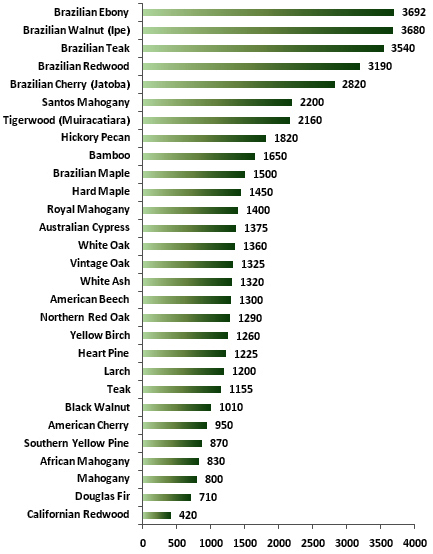Hardness scale of wood |

Categories
|

Hardness of the wood is one of the most important factors homeowners should consider while choosing the right type of the hardwood floor. The most commonly used method to measure the hardness of wood using a Janka Hardness Scale. Basically the numbers on the scale indicate the amount of force in pounds per square inch require to embed half the diameter of a 0.444-inch steel ball into the wood. Higher number indicates higher resistance of the wood, or in other words, it means the harder wood is. Knowing this property allow homeowners better understand which species will be more resistant to the different types of damages such as dents, scratches or ware of the floor in general. Also harder wood is harder to cut or nail during the installation. The numbers itself on the scale not saying much, but in comparison it is easier to understand which wood is harder. The most popular red oak rated 1290 on the scale, on the other hand, Brazilian cherry rated more than twice harder. It doesn't mean Brazilian cherry will not dent, more over under certain conditions even hardest wood can be damaged. In most cases, how your floor will look depend on the care will be provided. Definitely, with proper care and approximately the same conditions, harder wood will be more resistant to ware and very suitable for heavy traffic areas. Also it is important to know that harder wood is more expensive in comparing with softer species, but it will stay longer, what will save you in a long run. Bamboo floor because of its growing popularity was just recently added to the scale, even though it is not a wood. Natural bamboo is rated 1650 on the scale, what is relatively high, but in some cases it might be lower rating because of carbonization process manufacturers might use. |
|





